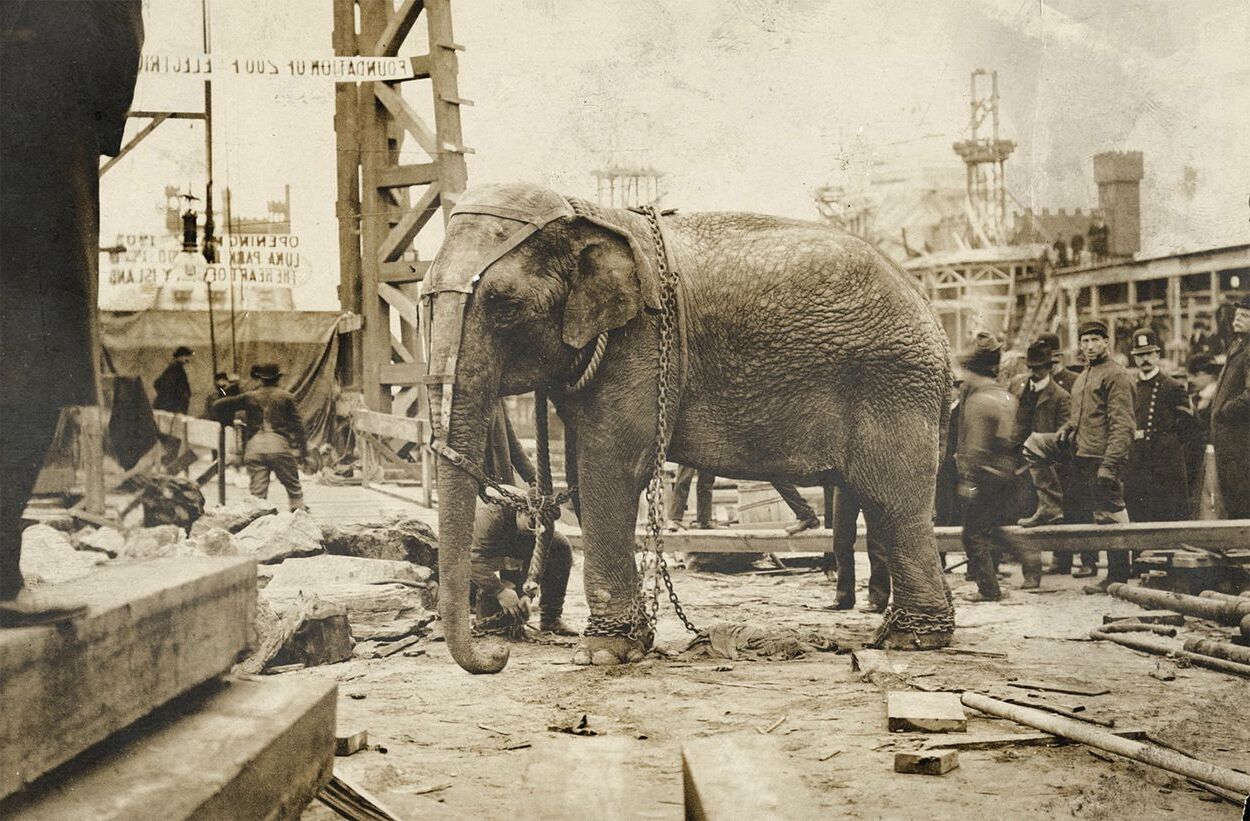
Who was Topsy the Elephant? Topsy was an Asian elephant who became famous for tragic reasons. Born around 1875, she was brought to the United States and spent much of her life in captivity, performing in circuses. Her story took a dark turn when she was involved in several incidents, leading to her being labeled a "bad" elephant. In 1903, Topsy was executed by electrocution at Luna Park in Coney Island, a grim event that was filmed by Thomas Edison. This act was part of a public demonstration of the dangers of alternating current (AC) electricity. Topsy's story remains a poignant reminder of the mistreatment of animals in entertainment.
Key Takeaways:
- Topsy the Elephant's tragic story sheds light on the mistreatment of animals in early 20th-century entertainment, sparking discussions about animal rights and the ethical treatment of animals in captivity.
- Topsy's legacy continues to inspire changes in how animals are treated in circuses and zoos, leading to increased awareness of animal rights and the creation of sanctuaries for former circus animals.
Topsy the Elephant: A Tragic Tale
Topsy the Elephant's story is both fascinating and heartbreaking. Her life, marked by exploitation and tragedy, offers a glimpse into the darker side of early 20th-century entertainment.
-
Topsy was born in Southeast Asia around 1875. She was captured and brought to the United States as a baby.
-
She became part of the Forepaugh Circus, one of the largest circuses in America at the time.
-
Topsy was billed as the first elephant born in America, a false claim used to attract audiences.
-
Throughout her life, Topsy was subjected to harsh training methods, including physical punishment.
-
She gained a reputation for being a "bad" elephant due to her aggressive behavior, which was likely a response to mistreatment.
The Infamous Execution
Topsy's life took a dark turn when she became involved in a series of incidents that led to her tragic end. Her execution remains one of the most controversial events in animal history.
-
In 1902, Topsy killed a spectator who tried to feed her a lit cigarette. This incident sealed her fate.
-
The owners of Luna Park, where Topsy was kept, decided she was too dangerous to keep alive.
-
Thomas Edison was invited to film Topsy's execution as part of his campaign to demonstrate the dangers of alternating current (AC) electricity.
-
On January 4, 1903, Topsy was fed carrots laced with potassium cyanide, then electrocuted with 6,600 volts of AC.
-
The event was witnessed by over 1,500 people and filmed by Edison's crew. The film was titled "Electrocuting an Elephant."
Legacy and Impact
Topsy's story didn't end with her death. Her legacy has sparked discussions about animal rights and the ethics of using animals for entertainment.
-
The film of Topsy's execution is one of the earliest examples of a snuff film, a term used for films that depict real deaths.
-
Topsy's death led to public outcry and increased awareness about the treatment of circus animals.
-
The American Society for the Prevention of Cruelty to Animals (ASPCA) used Topsy's story to advocate for better treatment of animals.
-
In 2003, Luna Park erected a memorial plaque in honor of Topsy, acknowledging the cruelty she endured.
-
Topsy's story has been referenced in various books, documentaries, and articles about animal rights and early film history.
Topsy in Popular Culture
Topsy's tragic tale has permeated popular culture, serving as a symbol of the fight against animal cruelty.
-
The band Primus released a song titled "Topsy the Elephant" in 1991, highlighting her story.
-
Topsy's execution was depicted in the 2017 film "The Current War," which dramatizes the rivalry between Thomas Edison and George Westinghouse.
-
The story of Topsy has been used in educational programs to teach about the history of animal rights.
-
Several children's books have been written about Topsy, aiming to educate young readers about the importance of treating animals with kindness.
-
Topsy's tale has inspired numerous artists, resulting in paintings, sculptures, and other works of art that commemorate her life and death.
The Ethical Debate
Topsy's execution has sparked ongoing ethical debates about the use of animals in entertainment and the responsibilities of those who care for them.
-
Some argue that Topsy's aggressive behavior was a direct result of the abuse she suffered, raising questions about the ethics of using animals in circuses.
-
The use of Topsy's death in Edison's campaign against AC electricity has been criticized as exploitative and unethical.
-
Topsy's story has been used to highlight the need for stricter regulations on the treatment of animals in captivity.
-
Animal rights organizations continue to use Topsy's story to advocate for the end of animal exploitation in entertainment.
-
The ethical debate surrounding Topsy's execution has led to increased scrutiny of the practices used in circuses and other animal-based entertainment industries.
Modern Reflections
Reflecting on Topsy's story provides valuable lessons for modern society about the treatment of animals and the importance of compassion.
-
Topsy's story has inspired changes in how elephants and other animals are treated in circuses and zoos.
-
Many modern circuses have phased out the use of animals in their performances, partly due to the legacy of cases like Topsy's.
-
Topsy's tale is often cited in discussions about the psychological effects of captivity on wild animals.
-
The increased awareness of animal rights issues has led to the creation of sanctuaries where former circus animals can live out their lives in peace.
-
Topsy's story serves as a reminder of the importance of empathy and compassion in our interactions with animals.
Remembering Topsy
Topsy's life and death continue to resonate with people around the world, serving as a powerful reminder of the need for humane treatment of animals.
-
Topsy's story is included in many animal rights curricula, teaching new generations about the importance of animal welfare.
-
The film of Topsy's execution is preserved in the Library of Congress as a significant historical document.
-
Topsy's legacy has influenced legislation aimed at protecting circus animals from abuse.
-
The story of Topsy has been used in psychological studies to understand the impact of trauma on animal behavior.
-
Topsy's tragic end has inspired countless individuals to advocate for the humane treatment of all animals, ensuring her story will not be forgotten.
The Legacy of Topsy
Topsy the Elephant's story is a mix of tragedy and lessons. Her life, marked by mistreatment and a shocking end, highlights the need for better animal rights. Topsy's death, filmed by Thomas Edison, was a grim spectacle meant to discredit a rival's technology. This event, though controversial, brought attention to the harsh realities faced by circus animals.
Today, Topsy's legacy serves as a reminder of the importance of ethical treatment for all creatures. Her story has inspired changes in how animals are viewed and treated in entertainment. It also underscores the power of public awareness in driving social change.
By remembering Topsy, we honor her and push for a future where animals are treated with respect and kindness. Her tale, though sad, continues to influence and educate, ensuring that her life was not in vain.
Frequently Asked Questions
Was this page helpful?
Our commitment to delivering trustworthy and engaging content is at the heart of what we do. Each fact on our site is contributed by real users like you, bringing a wealth of diverse insights and information. To ensure the highest standards of accuracy and reliability, our dedicated editors meticulously review each submission. This process guarantees that the facts we share are not only fascinating but also credible. Trust in our commitment to quality and authenticity as you explore and learn with us.


